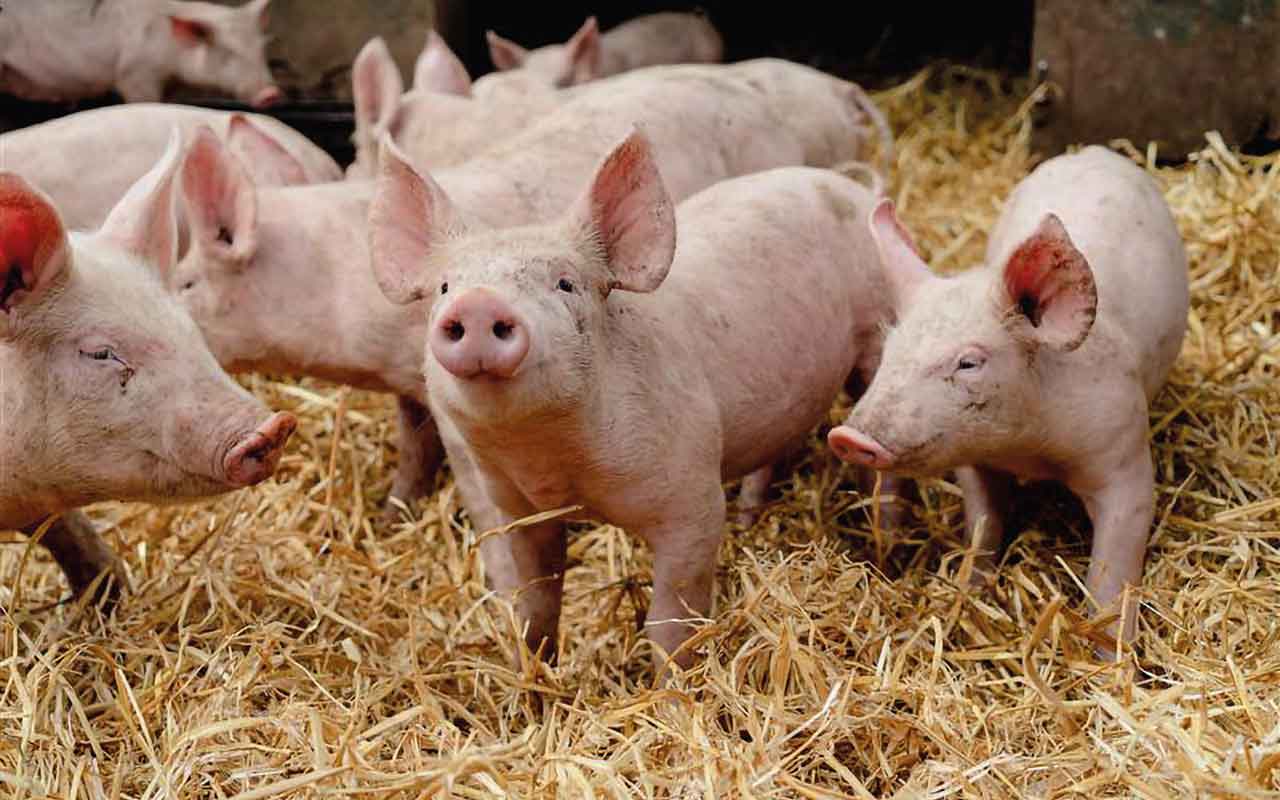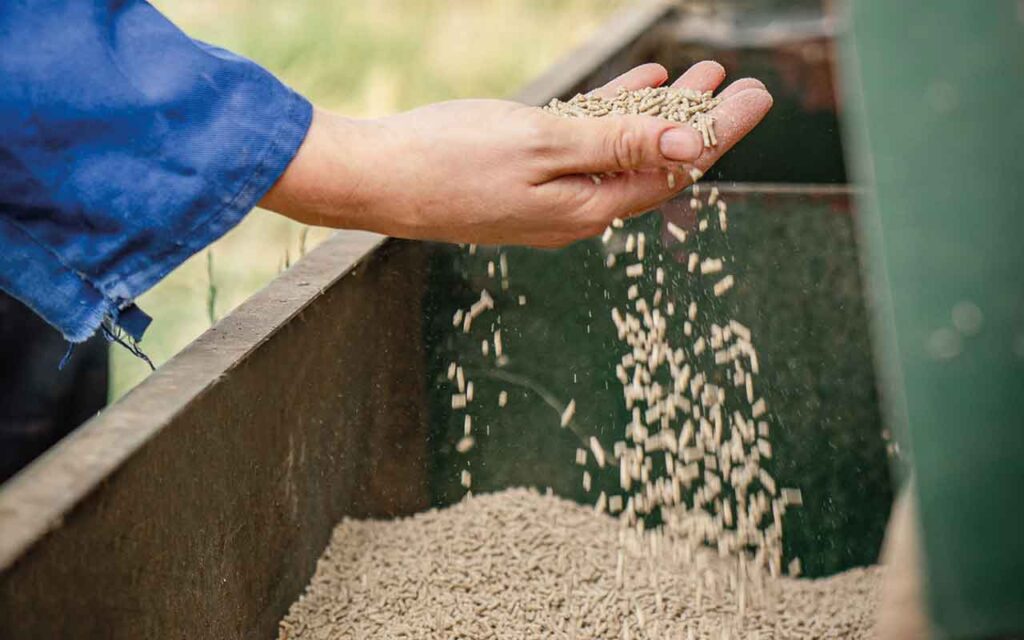After a turbulent decade of fluctuating prices and rising input costs, the UK pig industry has entered a period of relative calm.
While challenges remain, especially around disease threats and environmental pressures, this steadier footing is giving producers the chance to plan ahead and concentrate on longer-term goals.
Tom Welham, ForFarmers’ commercial director, said the sector’s renewed sense of balance is creating space for progress. “After 10 years of highs and lows, there is now an opportunity to look forward and focus on priorities like sustainability, performance and efficiency,” he said.
That sense of direction, he added, is encouraging producers to reinvest and make strategic improvements, supported by industry partners who share that outlook.
“At ForFarmers, our commitment is to the ‘future of farming’,” Tom said. “We’re investing in research, innovation and people to help farms become stronger and more resilient for the years ahead.”
ForFarmers’ pig technical and commercial manager, Sam Bradley, believes precision feeding is going to play an increasingly important role in helping deliver, not only improved margins, but also measurable environmental benefits.
Combining accurate nutrition with real-time business performance data and on-farm trial work is helping producers unlock new gains in both efficiency and sustainability.
“Precision feeding is about aligning nutrition with the pig’s actual needs, rather than working on averages or assumptions,” Sam said. “We’ve seen that by identifying and making small but meaningful improvements across every stage of production, farms can make a big difference to overall performance.”

Test and refine
To get the very best results on farm, this focus on precision needs to extend well beyond nutritional formulation and composition of feed. Across the UK, Sam and her team are working directly with pig farmers to test new diets, ingredients and feed additives in real-world, commercial settings.
“Running trials on commercial farms gives a far more accurate picture than lab-based testing alone,” Sam said. “It allows us to see how different diets behave under real pressures, and in the past 12 months we’ve been involved in 15 different farm trials on additive options and diets to help meet specific challenges customers are facing.
“If we feel there is a new product on the market or a new diet offering that might improve a customer’s performance, it’s vital those of us working in the feed sector collaborate with customers on-farm to test if this can become a reality.”
Three long-term partner farms now share complete business and production data with Sam and her colleagues, offering detailed visibility of feed use, costs, growth performance, environmental scores and efficiency.
“That level of data means we can see exactly where feed and management changes make the biggest difference,” she added. “It might highlight that a small shift in a feed specification improves growth rates, or that fine-tuning feeding protocol reduces waste. These are the marginal gains that add up to big results.
“It’s a two-way relationship. The fact that these producers are willing to share so much information speaks volumes about the trust that’s been built. They know that by working openly with us, we can tailor solutions that genuinely improve their business performance, across lots of different metrics.”
The insights from these farms feed directly into wider research and product development, helping refine feeding programmes that will benefit the broader market.
A recent example of this process is Ultra Plus, a finishing feed supplement designed to improve nutrient uptake and promote even growth. Farm trials have shown improvements in liveweight gain, feed conversion and pig uniformity, alongside reports of calmer, healthier pigs.
“Ultra Plus started as a concept in our development team,” Sam said. “It was tested on a handful of commercial units, and the feedback we received has helped refine both the formulation and how it is used. That’s what these partnerships are all about – turning theory into practical results.”

Data-driven nutrition
Pig producers today have access to more digital information than ever before, including growth rates, daily feed intakes, carcass quality and environmental factors. The challenge is increasingly about how to make best use of this data.
ForFarmers has been developing digital tools to help turn this information into practical, actionable advice. One example is Feedscoop, which combines a producer’s own performance data with nutritional modelling to predict how feed changes could influence performance, efficiency and carbon output of
pig businesses.
“Feedscoop gives us a way to model ‘what-if’ scenarios before any change is made,” Sam explained. “We can test how a shift in density or a new ingredient mix might affect growth rates, feed conversion or even carbon dioxide emissions. That level of insight gives producers the confidence to make informed decisions.”
This approach is grounded in the belief that precision feeding isn’t just about viewing feed in isolation, but about how diets interact with genetics, housing, and management systems.
“Data allows us to identify where pigs’ feed efficiency can be improved without compromising welfare or productivity,” Sam said. “Increasingly, it’s also helping us see where environmental gains could be made by changing diet specification and tweaking/optimising feed application.
“This is crucial for many pig producers who are now having to meet sustainability and environmental targets set out by retailers and processors.”
Beyond zinc
The industry has made significant, positive progress since moving away from zinc oxide use in piglet diets, with a lot of knowledge and best-practice guidelines developed through collaborative research and partnerships between feed providers and their customers.
“We are continually learning, reviewing and implementing further improvements in piglet diets,” Sam added.
“The biggest thing we learned from the zinc transition is the importance of responsiveness. Without zinc, performance is more sensitive to changes in health, housing and genetics, so diets and management need to adapt quickly to any problems encountered on farm.
“That’s when having our flexible VIDA piglet feed range and good technical support really matters.”
The VIDA Vital diets use highly digestible ingredients, balanced protein levels and a targeted blend of well-researched and proven prebiotics, probiotics, organic acids and functional fibres to support a healthy gut environment.
Smarter formulation
To help pig producers feed their livestock with greater precision, it’s essential that diet formulation in the mill is as accurate as possible, and that the best-quality raw materials are being sourced.
“We’ve invested in new raw-material sampling equipment across our UK mills, allowing for more frequent nutrient testing and better control of diet consistency,” Sam added. “This has included the introduction of near-infrared machines at two feed mills, with a plan to invest in a wider rollout to all mills in the future.
“As a result of this investment, we’ve been able to further increase the accuracy and frequency of testing, ensuring that feeds are produced with the highest levels of precision, achieve optimal nutritional specifications and result in minimal waste.
“Every tonne of feed that works more efficiently is a win for us, the producer and the environment.”
The company is also exploring how carbon footprint can be factored into formulations alongside traditional performance and cost metrics. “We’re looking at how we can assess the carbon intensity of ingredients and use that information to support producers with their own sustainability goals. It’s still early days, but it’s where the industry is heading,” Sam said.
Looking ahead
As the UK pig industry looks ahead, the focus on data, precision feeding and collaboration is only set to strengthen. Across the sector, producers, genetics companies, nutritionists and researchers are working closely to turn information into practical improvements on farm.
“We’re constantly learning from one another,” Sam said. “Within ForFarmers, our teams regularly compare findings from trials, farm visits and producer feedback, ensuring that successful approaches can be adapted and applied more widely.
“If something works well on one unit, we’ll look at how those lessons could benefit others. It’s about making progress together, rather than in isolation.”
By pooling data and experience in this way, the industry can respond faster to new challenges and opportunities.
“As feed efficiency, welfare and sustainability become increasingly intertwined, the emphasis will remain on precision and evidence-led progress,” Sam concluded. “The industry’s willingness to collaborate, learn from real farm data and focus on the detail will influence its success in the years ahead.”




